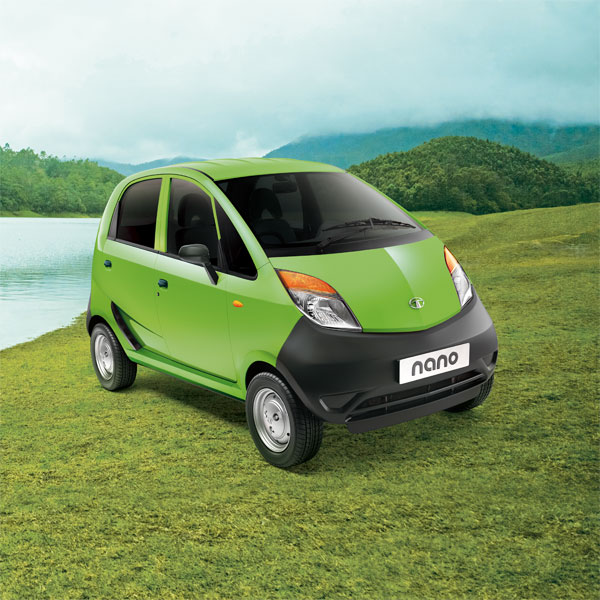What is it they say about big things and small packages?
A new version of the Tata Nano--the world's cheapest car--was recently unveiled in Ahmedabad, India.
The Tata Nano CNG emax is a bi-fuel vehicle, capable of running on both compressed natural gas (CNG) and gasoline.
At 36km/kg of CNG, the Nano CNG emax is India's most fuel-efficient car; its 75.6 g/km of CO2 rating also makes it the country's least-polluting internal combustion vehicle.
Like other versions of the Nano, the CNG emax is powered by a 37-horsepower 624cc two-cylinder engine, which is mounted in the back of the car and drives the rear wheels.
Now, though, drivers can switch between CNG and gasoline on the fly if they want more performance (the power output is slightly lower on gas)--and the car will do so automatically if it detects a gas leak.

2012 Tata Nano
The Nano CNG emax has a 4.0-liter CNG tank, which is mounted under the driver's seat to maximize space. Tata says it will provide roughly 93 miles of range, as well as an additional 233 miles of range on gasoline.
The Nano CNG emax will only be available in certain regions of India where a CNG refueling infrastructure exists.
Tata has offered the Nano in India since 2009, but despite a base price of around $2,600, the tiny car hasn't been selling well. In response, Tata has tried to reinvent its image, selling it not as basic transportation but as a cool small car.
It's hard to tell if the addition of the CNG emax will improve the Nano's cool factor, or Tata's bottom line, but natural-gas cars are taking a growing portion of the market in India.
In the United States, on the other hand, they are only a tiny fraction of the passenger-car market, and are mostly confined to pickup-truck conversions and large commercial vehicle fleets.
A major problem for car owners is the lack of natural-gas refueling stations. The U.S. has roughly 1,000 in total, but fewer than half of them are open to the public. That compares to more than 100,000 gasoline stations.
Home-fueling equipment is virtually nonexistent, so the only option is for CNG cars to carry large fuel tanks that eat up luggage space.
To get around this, the natural-gas industry has developed prototype vehicles that use gasoline as a range-extender.
Like the Nano, those cars switch over to gasoline when their CNG supplies run out. However, no car maker has adapted the technology for U.S. production vehicles thus far.
The only CNG passenger car currently sold here is the Honda Civic Natural Gas, though Impco now offers a bi-fuel conversion for the 2014 Chevrolet Cruze.
_______________________________________________












